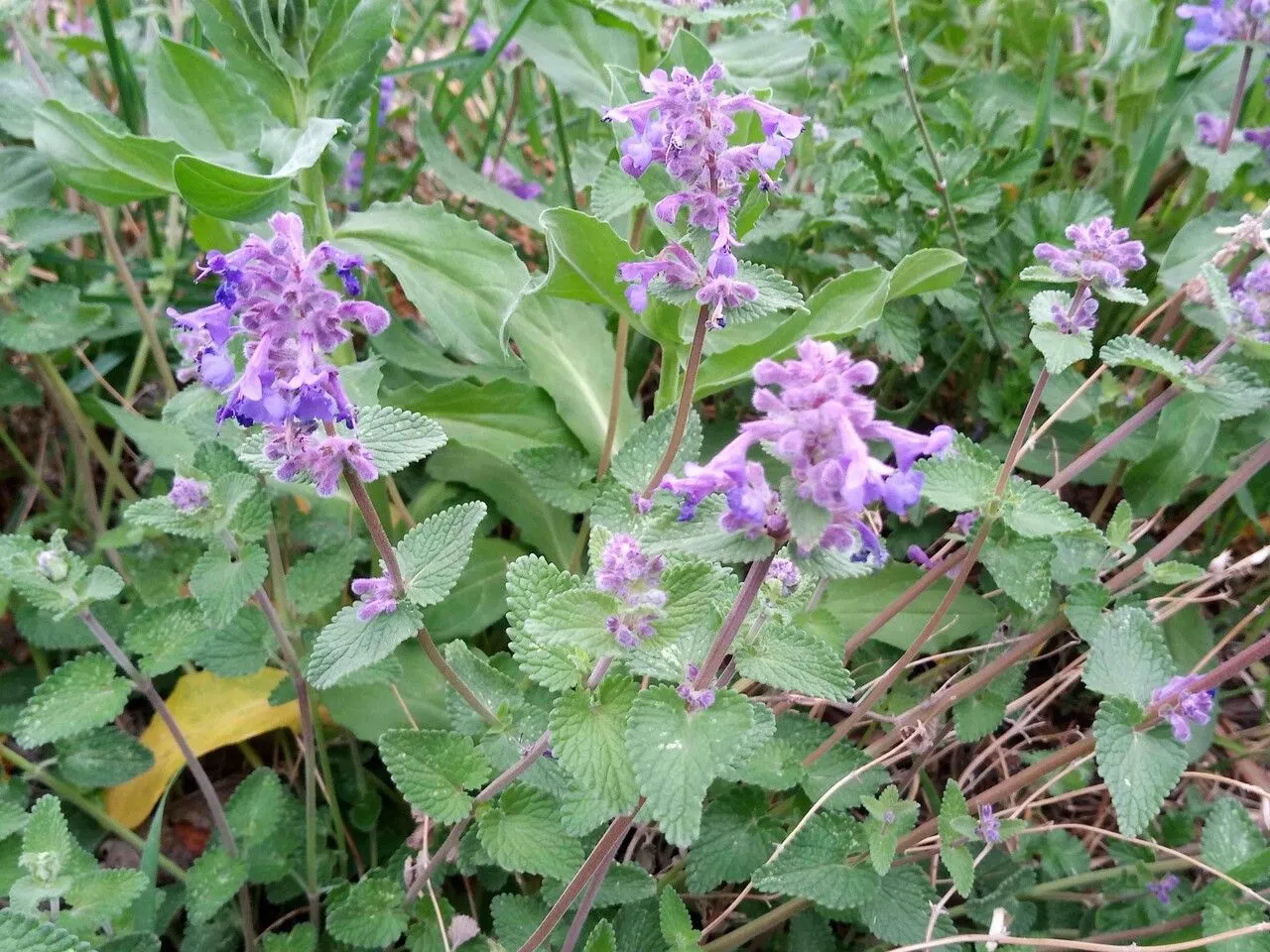
Author: L.
Bibliography: Sp. Pl.: 26 (1753)
Year: 1753
Status: accepted
Rank: species
Genus: Salvia
Vegetable: False
Observations: C. Europe to C. Asia and Iran
Lilac sage is a perennial plant renowned for its ornamental appeal and botanical significance. Scientifically known as Salvia verticillata, this species was first described by the acclaimed botanist Carl Linnaeus in 1753 in his seminal work “Species Plantarum.”
Belonging to the Lamiaceae family, which includes many aromatic herbs, lilac sage is distinguished by its clustered, whorled arrangement of flowers. The plant derives its common name from the enchanting lilac hue of its blossoms, which can create a vivid display in gardens and natural settings.
The native range of lilac sage extends across Central Europe, Central Asia, and into Iran. This wide geographical distribution indicates the plant’s adaptability to a variety of climates and terrain. Lilac sage thrives in well-drained soils and is often found in meadows, hillsides, and forest edges where it enjoys full sun to partial shade.
In horticulture, lilac sage is valued for its ease of cultivation and low maintenance needs. Gardeners appreciate its ability to attract pollinators such as bees and butterflies, making it a beneficial addition to eco-friendly gardens.
Given its long-standing recognition and botanical interest, Salvia verticillata continues to be a subject of study and admiration among botanists and plant enthusiasts alike.
Dan: krans-salvie
Nld: kranssalie
Eng: lilac sage, whorled clary, whorled sage
Lit: menturinis šalavijas
Deu: quirlblütige salbei, quirlblütiger salbei
Swe: kiehkurasalvia, kranssalvia
Fin: kiehkurasalvia
Nob: kranssalvie
Nno: kranssalvie
Lav: mieturu salvija
Est: männassalvei
Fra: sauge verticillée
Cym: blodrwyog, clari troellennog, dail saeds, gwerdonell, troellennog
En: Lilac sage, Whorled clary, Whorled sage
Be: Шалфей мутоўчаты
Hr: Pršljenasta kadulja
Cs: Šalvěj přeslenitá
Da: Krans-salvie
Nl: Kranssalie
Et: Männassalvei
Fi: Kiehkurasalvia
Fr: Sauge verticillée
Ka: Დაჯირა
De: Quirlblütiger Salbei, Quirl-Salbei, Quirlblütige Salbei, Quirlige Salbei
It: Salvia spuria
Lv: Mieturu salvija
Lt: Menturinis šalavijas
Nb: Kranssalvie
Nn: Kranssalvie
Fa: سالویای بنفش
Pl: Szałwia okręgowa
Ru: Шалфей мутовчатый
Sk: Šalvia praslenatá
Sv: Kranssalvia, Kiehkurasalvia
Tr: Helezonik ada çayı
Uk: Шавлія кільчаста
Cy: Clari troellennog, Blodrwyog, Dail Saeds, Gwerdonell, Troellennog
Taken Nov 21, 2022 by R B (cc-by-sa)
Taken Sep 15, 2022 by Karlo Mikic (cc-by-sa)
Taken Mar 30, 2022 by etienne copeaux (cc-by-sa)
Taken Jul 3, 2021 by Blue Bottle (cc-by-sa)
Taken Jun 18, 2017 by Yoan MARTIN (cc-by-sa)
Taken Jul 11, 2014 by Tela Botanica − Liliane Roubaudi (cc-by-sa)
Taken Aug 10, 2020 by Luc Guislain (cc-by-sa)
Taken Jul 3, 2021 by Blue Bottle (cc-by-sa)
Taken Sep 23, 2022 by Werner Rom (cc-by-sa)
Taken Mar 30, 2022 by etienne copeaux (cc-by-sa)
Taken Aug 11, 2021 by Jacques Zuber (cc-by-sa)
Taken Oct 8, 2022 by Kai Best (cc-by-sa)
Taken Jul 23, 2021 by Dieter Albrecht (cc-by-sa)
Taken Aug 10, 2020 by Luc Guislain (cc-by-sa)
Taken May 21, 2022 by Hmdy Akn (cc-by-sa)
Taken Sep 22, 2019 by W Gunda (cc-by-sa)
Taken Sep 22, 2019 by W Gunda (cc-by-sa)
Taken Aug 26, 2022 by Carla Zicari (cc-by-sa)
Taken Jan 1, 1800 by Tela Botanica − Thierry Pernot (cc-by-sa)
Taken Aug 16, 2022 by huy HO (cc-by-sa)
Taken Jan 1, 1800 by Tela Botanica − Thierry Pernot (cc-by-sa)
Taken Aug 15, 2010 by Photoflora – Jean-Luc TASSET (©)
Taken Jan 1, 1800 by Tela Botanica − Thierry Pernot (cc-by-sa)
Taken May 23, 2021 by Sabin Poenariu (cc-by-sa)
Taken Jul 23, 2021 by Dieter Albrecht (cc-by-sa)
© copyright of the Board of Trustees of the Royal Botanic Gardens, Kew.
© copyright of the Board of Trustees of the Royal Botanic Gardens, Kew.
© copyright of the Board of Trustees of the Royal Botanic Gardens, Kew.
Taken Jan 1, 1970 by Photoflora – L’Abbé COSTE (©)
Taken Jul 15, 2011 by Photoflora – Benoit BOCK (©)
Taken Jan 1, 1800 by Tela Botanica − Thierry Pernot (cc-by-sa)
Taken Jul 11, 2014 by Tela Botanica − Liliane Roubaudi (cc-by-sa)
Taken Jul 16, 2022 by Pavel Veselý (cc-by-sa)
Growth habit: Forb/herb
Ph maximum: 7.5
Ph minimum: 7.0
Light: 9
Atmospheric humidity: 3
Bloom months: [‘may’, ‘jun’, ‘jul’, ‘aug’]
Soil nutriments: 5
Family: Myrtaceae Author: (F.Muell.) K.D.Hill & L.A.S.Johnson Bibliography: Telopea 6: 402 (1995) Year: 1995 Status:…
Family: Rubiaceae Author: Pierre ex A.Froehner Bibliography: Notizbl. Bot. Gart. Berlin-Dahlem 1: 237 (1897) Year:…
Family: Sapindaceae Author: Koidz. Bibliography: J. Coll. Sci. Imp. Univ. Tokyo 32(1): 38 (1911) Year:…
Family: Asteraceae Author: A.Gray Bibliography: Pacif. Railr. Rep.: 107 (1857) Year: 1857 Status: accepted Rank:…
Family: Fabaceae Author: Medik. Bibliography: Vorles. Churpfälz. Phys.-Ökon. Ges. 2: 398 (1787) Year: 1787 Status:…
Family: Aspleniaceae Author: (Cav.) Alston Bibliography: Bull. Misc. Inform. Kew 1932: 309 (1932) Year: 1932…